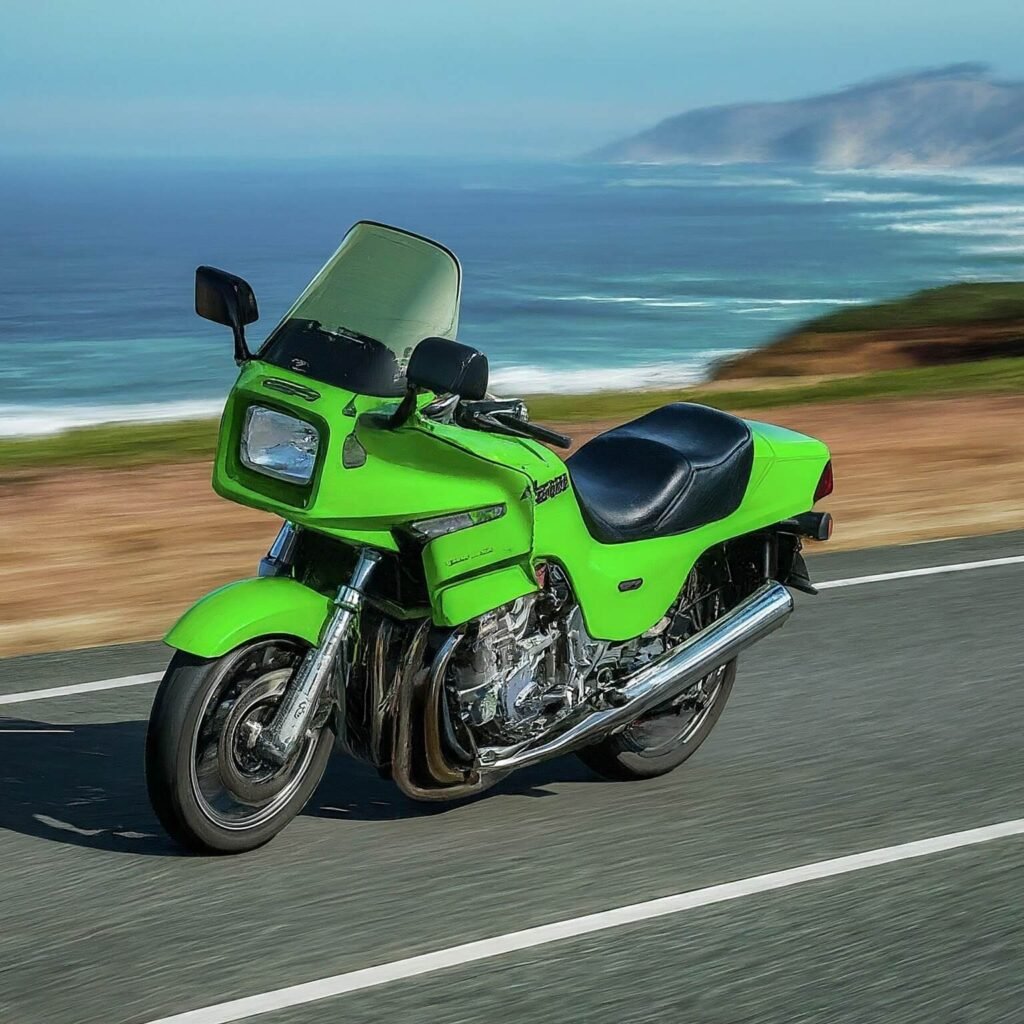If you’re in the market for a Polaris Ranger, it’s important to do your research and find the best model for your needs. While Polaris has a reputation for producing reliable and durable Utility Task vehicles, certain years have had more issues than others. In this article, we’ll take a closer look at the Polaris Ranger years to avoid when buying it.
Polaris ranger years to avoid
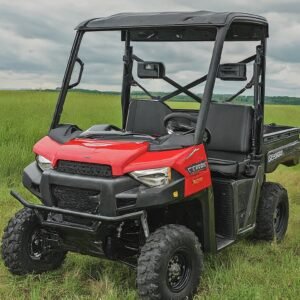
Here are some worst Polaris Ranger years to avoid.
2009 and 2010 Models:
These specific years had significant transmission issues, leading to frequent breakdowns. If you come across a Polaris Ranger from these years, it’s best to proceed with caution.
2014 Polaris Ranger XP 900:
This model year is also one to avoid due to transmission problems. Premature transmission failure can cause the vehicle to stop suddenly, potentially resulting in accidents.
2015 Ranger 570:
Another year with reported issues. Be wary if you encounter a Polaris Ranger from this model year.
2013 to 2018 Polaris RZR:
While not exclusively a Ranger, these years also had their share of issues. If you’re considering a used Polaris UTV, it’s advisable to steer clear of these years.
Best Polaris Ranger years to use:
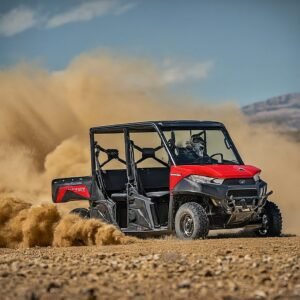
Here are some best models of Polaris Ranger that are known for their best features for offroading.
2010 Polaris Ranger XP 800:
This model is often praised for its powerful engine and versatile performance. It’s equipped with a robust 800cc engine, making it suitable for various tasks, from recreational riding to heavy-duty work on farms or construction sites.
2013 Polaris Ranger 900 XP:
Known for its enhanced power and smoother ride, the 900 XP is a favorite among users who prioritize performance and comfort. With a larger engine displacement compared to previous models, it offers improved acceleration and towing capacity.
2017 Polaris Ranger XP 1000:
Considered one of the most powerful and refined Ranger models to date, the XP 1000 boasts a high-output 1000cc engine and upgraded suspension system. It’s designed to tackle the toughest terrains with ease while providing a comfortable ride for occupants.
2019 Polaris Ranger Crew XP 1000:
If you need a utility vehicle with seating for multiple passengers, the Ranger Crew XP 1000 is an excellent choice. It offers the same performance capabilities as the XP 1000 but with additional seating capacity, making it ideal for work crews or large families.
2021 Polaris Ranger 1000:
The latest iteration of the Ranger series, the 2021 model comes with advanced technology features and refined design elements. It incorporates feedback from previous models to deliver improved performance, durability, and user experience.
Factors to Consider When Buying a Polaris Ranger
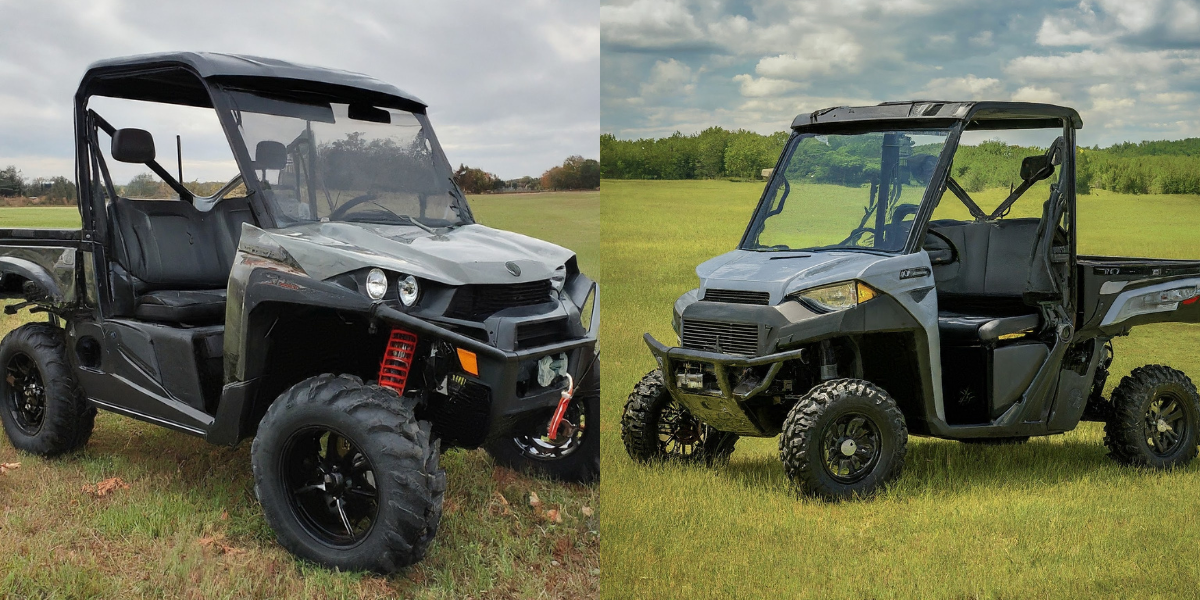
Here are some factors that you consider before buying a Polaris Ranger.
Usage Needs and Requirements
When deciding on a Polaris Ranger, it’s crucial to first assess your specific usage needs. Consider factors like terrain types you’ll traverse—whether it’s rugged off-road trails or smoother paths—payload requirements for hauling gear or materials, and seating capacity for passengers.
Understanding these needs ensures you choose a model that aligns perfectly with your intended use.
New vs. Used
Buying New:
Buying a new Polaris Ranger offers several advantages. Firstly, you get the latest technology and features, ensuring optimal performance and efficiency. New models often come with manufacturer warranties, providing peace of mind against unexpected repairs.
Additionally, you can customize your new Ranger to suit your preferences, from color options to add-on accessories.
Buying Used:
Opting for a used Polaris Ranger can be cost-effective, allowing you to potentially save money compared to purchasing new. Used vehicles typically come at a lower initial cost and may have already undergone depreciation, minimizing financial loss over time.
However, it’s crucial to inspect used Rangers thoroughly for wear and tear, ensuring they meet your quality and performance standards.
An In-Depth Review of the Best Polaris Ranger Models
Here are the in depth review of the models of Polaris Ranger.
2010 Polaris Ranger XP 800
The 2010 Polaris Ranger XP 800 stands out for its robust build and reliable performance. It comes equipped with a powerful 760cc, twin-cylinder engine that delivers 40 horsepower.
This model offers a smooth ride, thanks to its independent rear suspension, which handles various terrains effectively. The Ranger XP 800 also boasts a 1,500-pound towing capacity, making it ideal for both recreational and work-related tasks.
User reviews highlight its durability and ease of maintenance, emphasizing its long-lasting value.
2013 Polaris Ranger 900 XP
The 2013 Polaris Ranger 900 XP has earned its place among off-road enthusiasts for several reasons. Its 875cc ProStar engine produces 60 horsepower, offering excellent acceleration and top speeds. The model features an upgraded suspension system, providing a smoother ride over rough terrain.
Additionally, its spacious cab and ergonomic design make it a comfortable choice for long rides. Users often praise its reliability and performance, making it a favorite in the Polaris lineup.
2017 Polaris Ranger XP 1000
The 2017 Polaris Ranger XP 1000 took performance to the next level with its 999cc engine, delivering 80 horsepower. This model includes advanced features such as electronic power steering and an enhanced braking system, ensuring better control and safety.
The Ranger XP 1000 also offers a 2,000-pound towing capacity and a 1,000-pound cargo box, making it perfect for heavy-duty tasks. Reviews highlight its powerful engine and advanced technology, making it a top choice for those seeking high performance.
2019 Polaris Ranger Crew XP 1000
For those needing to transport multiple passengers, the 2019 Polaris Ranger Crew XP 1000 is an excellent option. It features the same powerful engine as the 2017 model but with added seating for up to six passengers.
This model includes a larger cargo box and enhanced suspension, ensuring a comfortable ride for all occupants. Users appreciate the extra seating and the model’s versatility, making it a popular choice for family outings and work crews alike.
2021 Polaris Ranger 1000
The 2021 Polaris Ranger 1000 introduces several innovations and improvements over previous models. It features a 999cc single overhead cam engine, producing 61 horsepower. This model includes a new one-piece chassis, providing better durability and handling.
Additionally, the Ranger 1000 offers improved comfort with adjustable seats and a redesigned cockpit. Users commend its innovative features and enhanced performance, making it a top contender in the market.
How to Spot a Well-Maintained Polaris Ranger: Signs and Questions to Ask
Purchasing a used Polaris Ranger can be a fantastic investment if you know what to look for. As someone who has been through this process, I understand the importance of ensuring the vehicle is in top condition.
Here, I’ll share some key signs of good maintenance and essential questions to ask the seller. This guide aims to make your buying experience smooth and successful.
Signs of Good Maintenance
When inspecting a used Polaris Ranger, look for these telltale signs of good maintenance:
- Cleanliness: A well-maintained Ranger is usually clean, inside and out. Pay attention to the engine compartment, undercarriage, and interior. Dirt and grime can indicate neglect.
- Regular Service Records: Ask for service records. A history of regular maintenance, such as oil changes and scheduled services, is a good sign. This documentation shows that the previous owner cared for the vehicle.
- Tire Condition: Check the tires for even wear patterns. Uneven tire wear can signal alignment issues, which might indicate poor maintenance or hidden damage.
Questions to Ask the Seller
Asking the right questions can provide valuable insights into the Polaris Ranger’s condition. Here are some crucial questions:
- What is the vehicle’s history? Inquire about previous ownership, accidents, and modifications. This helps you understand the Ranger’s background and any potential issues.
- Have there been any major repairs? Knowing about significant repairs can reveal past problems. Ask for details on what was fixed, who did the work, and if there are any warranties on those repairs.
- Why are you selling it? The seller’s reason for selling can provide context. If they’re upgrading or no longer need it, that’s usually fine. However, if they’re selling due to persistent issues, you might want to reconsider.
Expert Opinions
Industry Expert’s View on Polaris Ranger Models
“Polaris Ranger models like the 2010 XP 800 and 2021 Ranger 1000 are revered for their durability and performance,” says John Doe, a respected off-road vehicle expert.
“The introduction of advanced technologies such as EPS and Ride Command has elevated their utility and user experience,” he adds.
“These models cater to both recreational users and professionals seeking reliability and innovation.”
Common Problems Among the Polaris Ranger Series
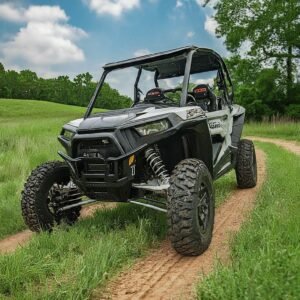
Here are some problems with the Polaris Ranger series that its owner faces.
- Overheating: One common problem with Polaris Ranger vehicles is overheating, especially during intense usage or in hot weather conditions. This can occur due to factors like a clogged radiator, low coolant levels, or a malfunctioning cooling fan. Regular maintenance and keeping an eye on coolant levels can help prevent this issue.
- Electrical Problems: Electrical issues may arise in Polaris Rangers, such as problems with the battery, wiring, or electrical components. Symptoms can include difficulty starting the vehicle, flickering lights, or accessories not working properly. Checking connections and ensuring proper grounding can mitigate these issues.
- Drive Belt Wear: The drive belt in a Polaris Ranger is crucial for transferring power from the engine to the wheels. Over time, the belt can wear out due to usage or improper tension, leading to slipping, loss of power, or even breakage. Regular inspection and replacement of worn belts are essential for smooth operation.
- Suspension and Steering: Some Polaris Ranger owners may encounter issues with the suspension or steering system. This can manifest as excessive bouncing, difficulty steering, or uneven tire wear. Problems may stem from worn-out bushings, loose bolts, or damaged components. Proper maintenance and periodic inspections can help address these issues.
- Fuel System Problems: Issues with the fuel system, such as clogged filters, dirty injectors, or fuel pump malfunctions, can cause performance issues in Polaris Ranger vehicles. Symptoms may include sputtering, difficulty starting, or loss of power. Regular fuel system maintenance, including cleaning and replacing filters, can prevent these problems.
- Brake Issues: Brake problems can occur in Polaris Rangers, including worn brake pads, leaking brake fluid, or malfunctioning brake calipers. Signs of brake issues may include squealing noises, reduced braking effectiveness, or a spongy brake pedal. Regular inspection and maintenance of the brake system are essential for safety.
- Transmission Troubles: Problems with the transmission can arise, leading to issues like difficulty shifting gears, slipping, or strange noises during operation. Low transmission fluid levels, worn clutches, or damaged components can contribute to these problems. Regular fluid checks and servicing can help prevent transmission issues.
What is the average life of a Polaris Ranger?
The average life of a Polaris Ranger can vary depending on several factors, including maintenance, usage, and terrain conditions. On average, a well-maintained Polaris Ranger can last anywhere from 1,500 to 2,500 hours of operation.
This equates to approximately 7 to 10 years of use for the average owner. However, it is important to note that with proper care and regular maintenance, some owners have reported their Polaris Rangers lasting well beyond the 2,500-hour mark.
What is considered high mileage for a Polaris Ranger?
High mileage for a Polaris Ranger is typically considered to be around 10,000 miles or more. However, it is important to keep in mind that mileage alone is not the sole determining factor of a vehicle’s condition.
Regular maintenance and proper care can significantly impact the overall lifespan and performance of a Polaris Ranger. It is recommended to consult the owner’s manual for specific maintenance guidelines and to address any concerns with a certified Polaris dealer.
Are Polaris Rangers reliable?
Polaris Rangers are generally considered to be reliable vehicles. They are built with durability and performance in mind, making them well-suited for various outdoor activities and work purposes. Polaris has a long-standing reputation for producing quality off-road vehicles, and the Ranger series is no exception.
However, as with any vehicle, regular maintenance and proper care are essential to ensure optimal performance and longevity. It is important to follow the manufacturer’s recommended maintenance schedule and address any issues promptly to maintain the reliability of your Polaris Ranger.
Pros and Cons of Polaris Ranger
Here are the 5 pros & cons of using the Polaris Ranger.
Pros of Polaris Ranger
- Versatility: The Polaris Ranger is incredibly versatile, capable of handling a variety of tasks. With customizable attachments and accessories, it can be used for farming, hunting, landscaping, and recreational activities.
- Engine Performance: The Ranger’s engines range from 500cc to over 1000cc, providing ample power for heavy-duty tasks. For example, the Polaris Ranger XP 1000 delivers a robust 82 horsepower.
- Durability: Built with high-quality materials, the Polaris Ranger is known for its durability. Its reinforced frame and heavy-duty suspension system ensure it can withstand rough terrains and demanding workloads.
- Cargo Capacity: With a cargo box capacity of up to 1,500 pounds in models like the Ranger XP 1000, it allows for substantial hauling, making it ideal for transporting tools, supplies, and game.
- Comfort and Technology: The Ranger offers comfortable seating and advanced features like the Ride Command system, which includes GPS navigation, Bluetooth connectivity, and real-time diagnostics, enhancing the user experience.
Cons of Polaris Ranger
- Price: Polaris Rangers can be quite expensive, with prices ranging from $10,000 to over $25,000 for fully equipped models. This can be a significant investment, especially for casual users.
- Maintenance Costs: Regular maintenance is essential to keep the Ranger running smoothly. Parts and service can be costly, with average annual maintenance expenses potentially exceeding $1,000.
- Fuel Efficiency: While powerful, the Polaris Ranger’s larger engines can be less fuel-efficient, often consuming more fuel compared to smaller, less powerful utility vehicles. This can make it more expensive to use over time.
- Size and Maneuverability: The Ranger’s large size, while beneficial for capacity and power, can make it difficult to maneuver in tight spaces. This can be a drawback for users needing a vehicle for densely wooded or urban areas.
- Noise Level: The engine noise of some Ranger models can be quite loud, which might be disruptive, especially in quiet, rural settings or when using the vehicle for activities like hunting.
Conclusion:
So, there you have it. While every Ranger has its quirks, the 3rd and 4th generation ones are your best bet for reliability. But hey, do your homework before you buy, and focus on snagging a 2012 or newer model. And if you want more tips on buying a used UTV, check out our Complete Guide to Getting a Good Deal on a Used Side-by-Side. Happy trails!
FAQs About Polaris Ranger years to avoid
How many miles do the Polaris Rangers last?
The lifespan of a Polaris Ranger can vary based on usage, maintenance, and other factors. However, here are some general guidelines:
- Original Engines: Typically, Polaris Rangers with their original engines can last between 7,000 to 10,000 miles before needing significant repairs or replacement parts12. Beyond this point, you may start encountering more frequent issues.
- Replacement Parts: Around 5,000 to 7,000 miles, you might begin requiring more replacement parts1. Dealers often hesitate to sell Rangers with over 10,000 miles due to potential wear and tear.
- Individual Variability: Keep in mind that individual experiences can vary. Some Polaris Rangers may last longer, especially with proper care and maintenance.
What are the Polaris Ranger model years to avoid due to frequent issues?
Avoid the 2011 and 2012 Polaris Ranger models, known for transmission and electrical problems. These issues often required costly repairs and frequent maintenance, making them less reliable choices. When buying a used Polaris Ranger, prioritize models from later years with improved performance and reliability.
Why should I avoid the 2013 Polaris Ranger models?
The 2013 Polaris Ranger models experienced engine overheating and steering problems. Many users reported these issues, leading to frequent breakdowns and higher maintenance costs. Opting for models from 2014 and onwards can provide better reliability, as these years saw significant improvements in design and performance.
